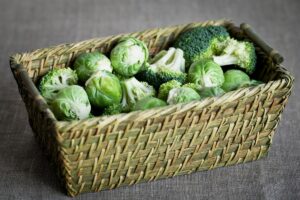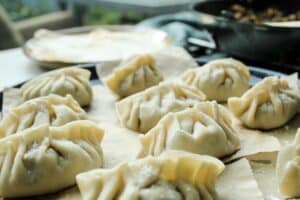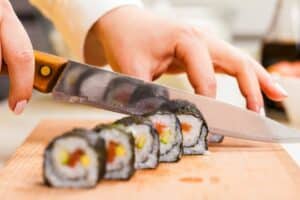Baby back ribs and spare ribs are both pork ribs, usually braised and slow-cooked to perfection before serving.
Still, there are significant differences in size, flavor, and texture to consider when determining which one you should prepare for your next meal.
Read on to learn what you need to know before you decide to use baby back ribs vs spare ribs.
Difference Between Baby Back and Spare Ribs
The main difference between baby back and spare ribs is their location on the hog, size, and flavor. Baby back ribs are smaller, sweeter ribs from the back of the pig, while spare ribs are larger, tougher ribs from the belly of the hog.
Appearance: Baby back ribs are smaller than spare ribs
Flavor: Baby back ribs are sweeter tasting than spare ribs
Preparation: Both are best when slow-cooked in an oven, smoker, grill, or slow-cooked
Use Cases: Both are popular when served at a barbecue or outdoor grilling events, but spare ribs do better with crowds because they are larger
Size: Baby back ribs come in racks of 8-13 and are 3-6 inches wide, whereas spare ribs come in racks of 11-13 and are 6-8 inches wide
Location on Hog: Baby back ribs come from the back of the hog, while spare ribs come from the lower belly region
Price: Baby back ribs are more expensive than spare ribs
Baby Back Ribs vs Spare Ribs Comparison Table
Below is a table of information to reference when considering spare ribs vs. baby back ribs.
| Size | Flavor | Meat Toughness | Preparation Method | Cook time | Location in Hog | Price | |
| Baby back ribs | Smaller, 3-6 inches with 8-13 ribs in a rack | Sweet | Tender | Braise and slow cook | Less, 1.5-2 hours in a 300 degree oven | Back of hog | Expensive |
| Spare ribs | Larger, 6-8 inches with 11-13 ribs in a rack | Less sweet | Tough | Braise and slow cook | More, 2.5-3 hours in a 300 degree oven | Belly of hog | Less Expensive |
Can You Substitute Baby Back for Spare Ribs?
Since both ribs are prepared and cooked similarly, you can almost always substitute baby back ribs for spare ribs. Spare ribs will need to cook slightly longer, but they each are best when slow-cooked in an oven, smoker, grill, or slow-cooker.
Both baby back and spare ribs will taste great when prepared with spice rubs, marinades, or sauces. They can also be brazed to increase tenderness and flavor in your finished ribs.
Moreover, baby back ribs and spare ribs have similar health benefits. They contain healthy nutrients but do have a high fat and calorie content to consider.
The main difference to consider when substituting baby back ribs for spare ribs is the size. Spare ribs will provide more meat than baby back ribs, so keep this in mind when purchasing your ribs if substituting one for the other.
Indeed, you will need to buy at least double the amount of baby back rib racks to have the same amount of meat as you’d get from spare ribs.
Related Article: Can you substitute pork loin for pork shoulder?
What Are Baby Back Ribs?
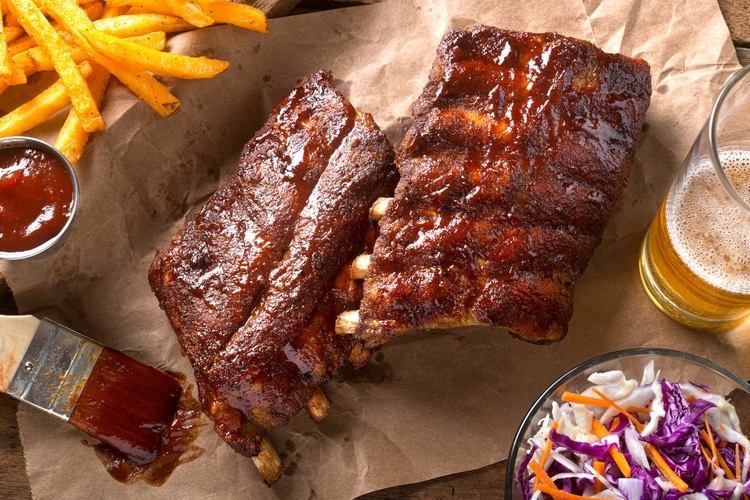
Baby back ribs come from the back of the pig, closest to where the ribs meet the backbone. These ribs are the same as those found in bone-in pork rib loin chops. Their location wrapped around the loin gives them their curved appearance.
A rack of baby back ribs usually contains between eight and thirteen ribs, each approximately 3 to 6 inches wide. These shorter ribs do not typically have other meats attached to the bottom, unlike spare ribs that often come with brisket attached.
Baby back ribs are usually around 2 pounds and provide enough meat for two adults, especially when paired with sides or other dishes. If you’re extra hungry, one rack might be the perfect amount just for you.
There is evidence that even the earliest humans enjoyed baby back ribs! This article by science.org explains how we know our ancestors dined on ribs, too.
How to Use Baby Back Ribs
Baby back ribs are simple to prepare and popular at various events. Once a significantly expensive option, they have become more affordable in recent years. However, they still have a higher price, which makes them a better choice for smaller gatherings than spare ribs or other less expensive cuts of meat.
Preparing Baby Back Ribs
Before cooking them, you can prepare baby back ribs with a spice rub, marinade, or sauce. You can make your own or choose your favorite store-bought brand.
Suppose you are looking for a simple barbecue option. In that case, we recommend slathering the ribs in your favorite barbecue sauce before cooking them.
Cooking Baby Back Ribs
Baby back ribs are best prepared using a slow cooking method. Popular slow cooking methods include using the moisture-rich heat of a slow cooker or the dry heat of a smoker or grill. Either way, slow-cooking is the best way to make the cartilage around the ribs juicy and tender.
Here are some simple time and temperature guidelines for cooking baby back ribs:
Oven: Cook for 1.5-2 hours at 300 degrees
Slow Cooker: Cook for 5 hours on low
Smoker: Cook for 6 hours at 200 degrees
Grill: Cook for 3 hours at 225 degrees
As you cook your ribs, check on them periodically. If you are using a grill, be sure to flip them every so often to ensure even cooking. You can also add sauce or marinade over the ribs to enhance the flavor.
Some people also prefer to wrap the ribs in foil for part of their cooking time, especially when using a smoker or grill.
Serving Baby Back Ribs
Baby back ribs are a crowd-pleaser at most events, especially barbecues or other outdoor grilling gatherings. Just make sure to give your guests plenty of napkins! After all, people love to eat them with their hands, so there’s no need to remove them from the bone before serving.
What Are Spare Ribs?
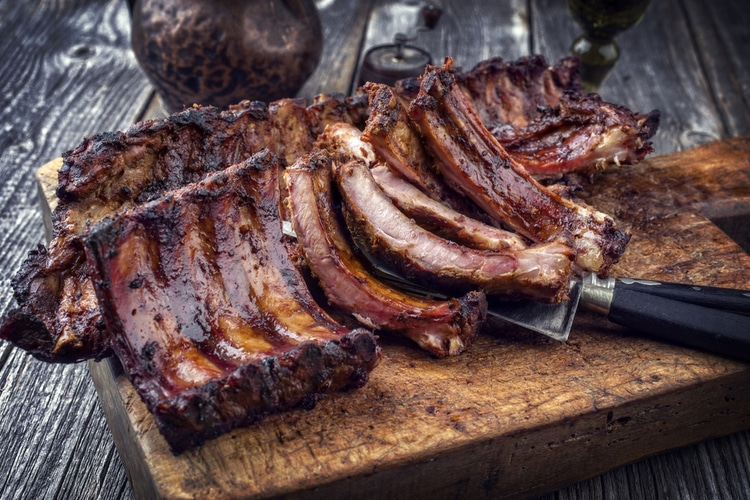
Spare ribs come from the lower ribs, extending around the hog’s belly to where the rib cage joins the sternum. This location makes them a flatter, fattier cut of ribs than baby backs or other back ribs.
Sometimes, spare ribs contain the brisket attached along the bottom of the ribs. The farther down the rib cage the spare ribs are cut from, the meatier the ribs will be.
Spare ribs are typically 6-8 inches wide and come in 11-13 rib racks. They tend to have tougher meat than racks from the back of the pig. Regardless, you can cook them to tender perfection using braising and slow cooking methods.
On average, spare ribs are around 3 pounds per slab and provide more than enough meat for two adults. While about half the weight is bones, spare ribs are larger. They can contain sufficient meat to share amongst a small group, especially if other food options are available alongside them.
How to Use Spare Ribs
Spare ribs provide a ton of meat, making them perfect for parties or groups of people. You can use a simple preparation to save time cooking or take a more elaborate approach for a more impressive serving.
Preparing Spare Ribs
Prepare your spare ribs by making your own spice rub, marinade, or sauce. Alternatively, you can pick up a premade version at a store if you are tight on time.
Spare ribs are versatile and taste great with a variety of flavors. As long as they are cooked correctly, they will be tender and delicious.
Cooking Spare Ribs
Since spare ribs are located around more active muscles on the hog, they usually contain more cartilage than other types of ribs. This means they require longer cook times to tenderize the ribs and ensure that each bite is juicy and delicious.
Here are some simple time and temperature guidelines for cooking baby back ribs:
Oven: Cook for 2.5-3 hours at 300 degrees
Slow Cooker: Cook for 6 hours on low
Smoker: Cook for 5.5 hours at 250 degrees
Grill: Cook for 1.5-2 hours at 200 degrees
Be sure to check your ribs often while you are cooking and flip them every half hour if you are cooking on a grill. Some people like to cook the ribs in foil for part of cooking.
Another popular method is to cover or brush your ribs with additional sauce or marinade as they are cooking to achieve more flavor and tenderness.
Serving Spare Ribs
Like baby back ribs, spare ribs are best after being braised and slow-cooked in a smoker, grill, over, or slow-cooker. Braise and cook these in advance for a popular dish at your next barbecue. If you haven’t already done so, these ribs are a great dish to try when first experimenting with smoking meats.
Wrapping Up
Baby back and spare ribs are popular choices at barbecues and other outdoor grilling events. You can prepare both with spice rubs, marinades, and sauces that you make yourself or purchase premade from your favorite grocery store.
Both baby back ribs and spare ribs require slow cooking to produce a tender, juicy meal to serve to yourself or your guests. Spare ribs are longer and better suited for larger groups of people, while baby back ribs are best for small gatherings.
Consider the number of people eating when deciding to serve baby back ribs vs. spare ribs at your next event.

